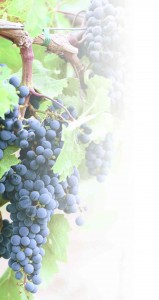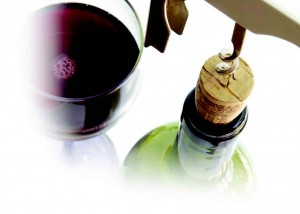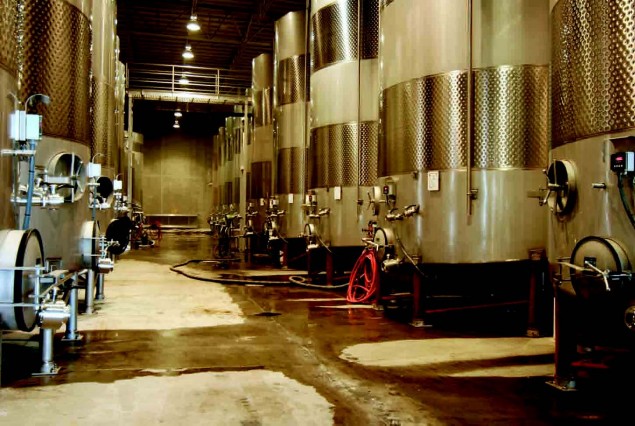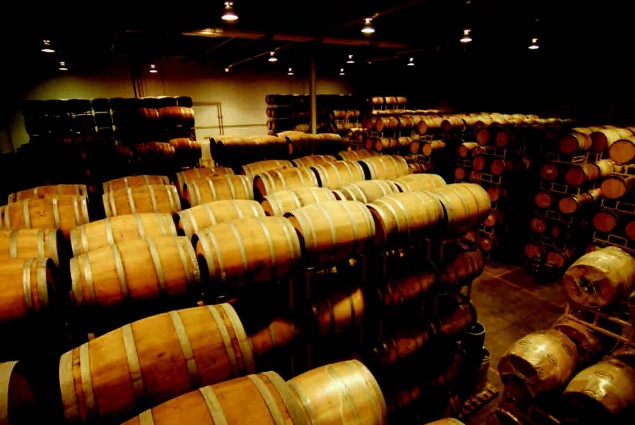Uncorking the Secrets of Kosher Wine
Wine plays a central role in Jewish religious life. In the days of the Temple, whenever one brought a korban (sacrifice), it had to be accompanied by wine. Furthermore, the Gemara teaches that wine epitomizes true happiness, thus the Levi’im only sang shirah (praise and thanks) while wine was being poured on the mizbayach (altar) (Berachot 35a). Of course, every Shabbat we commemorate the creation of the World over wine, and on Pesach, the four cups of wine are crucial in re-experiencing the Exodus. While wine figures so prominently in Judaism, making kosher wine is no simple matter.
Winemaking from A to Z
All grapes can be made into wine; however, they need a warm climate in which to grow. (Eastern Europe is too cold for growing grapes, and importing grape wine was not practical as it could spoil. Therefore, Eastern European Jews would import raisins and manufacture their own wine. The Shulchan Aruch includes halachot on raisin wine for this very reason.)
Grapes begin growing during the spring and are harvested during the summer. The longer the grapes remain on the vine, the sweeter they become. Thus, certain wines include the words “late harvest” on the label, indicating that the wine is sweeter than usual. Once ripe, most grapes will fall off the vine by themselves. Riesling is a type of grape that can stay on the vine longer than most and, thus, Riesling wine tends to be naturally sweet.
After the grapes are harvested, they are brought to a winery. While there are quite a few kosher wineries in Israel, most wineries throughout the world are not kosher. A common practice in the industry is to use noted wineries located throughout the world to produce special kosher runs.
What Makes a Wine Kosher?
The kosher supervision of wine and grape juice is one of the most complicated areas of kosher food production. This is because wine cannot be handled by a non-Jew due to yayin nesech, the Biblical prohibition against drinking wine that had been used in a libation in a pagan ceremony. The rabbis went even further and prohibited any wine handled by non-Jews; this prohibition is known as stam yaynam and was designed to prevent intermarriage.
Thus, throughout the winemaking process, a non-Jew cannot operate any machinery, open or shut any valves or start or stop any pumps. Wine that is mevushal (cooked) can be handled by non-Jews since it is no longer fit for sacramental use, or in Talmudic terms, it is not ra’oyi lemizbayach.
If the winery is not exclusively kosher, the mashgiach must first kasher (kosherize) all of the equipment and machinery that is to be used during the process. Depending on the size and scope of the plant, the number of mashgichim can vary from two or three in some places to twenty-six in others. It is, of course, imperative that the mashgichim be highly responsible, competent individuals since they will be operating machinery—some of which costs around $750,000. Understandably, the plant employees tend to be apprehensive when new mashgichim first arrive; once the employees realize that the mashgichim are capable of handling the equipment, they tend to relax.
Pesach Wine
Most kosher wines are certified kosher for Passover. Chazal teach that it is preferable to use red wine at the Seder since it is reminiscent of dam korban Pesach and dam milah (the blood of the Pesach sacrifice and the blood of a brit milah). Non-mevushal (boiled) and unsweetened wine are also preferable since such wine is considered fit for sacramental use, or in Talmudic terms, ra’oyi lemizbayach. Rema states, however, that if one has white wine that happens to be of superior quality than red, it is better to use that on Pesach.
The Process
The prohibition of stam yaynam takes effect once the grapes are crushed and hamshachah has taken place. Hamshachah occurs when the juice is separated from the grapes and the pits and is then collected.
Grapes arrive at the plant in either twenty-pound baskets, one-ton bins or six- to nine-ton trucks, depending on the size of the plant. They are then dumped into a hopper and moved into a de-stemmer, which shoots out the stems and crushes the grapes. The crushed grapes are pumped into a “treat tank,” where they are treated with enzymes to help extract the pectin out of the juice. The juice is further extracted when the pulp continues into a press. Finally, the pits (which are bitter) and the skins are discarded. A ton of grapes yields about 200 gallons of juice. At this point, however, between 10 to 15 percent of the juice is actually sediment.
The King’s Wine
Several hundred years ago, a king hired a Jewish doctor. Seeing that the doctor wouldn’t drink wine handled by a non-Jew, the non-Jewish servants in the court accused the doctor of believing that the king was contaminated. “He won’t drink wine from the king’s cup,” they cried. “The Jew doctor thinks you are contaminated!” The king grew irate. To show that his refusal had nothing to do with contamination, the doctor said, “I’ll prove to you that I don’t believe the king is contaminated.” With that, he began to drink the water he had used only moments earlier to wash the king’s feet.
After the juice goes through a filter, the sediment level is brought down to about 1 or 2 percent. At this stage of the process, some wineries will run the liquid through a pasteurizer, cooking it at 190 degrees. The pasteurizing process converts the liquid into grape juice and also renders it mevushal, enabling a non-Jew to handle it from this point on. Different opinions exist as to what renders the juice mevushal. Rabbi Moshe Feinstein maintained that the juice must be cooked at at least 170 degrees Fahrenheit, which is the position taken by the OU. While most kosher wines are mevushal, the finer wines tend not to be, as the boiling process affects the taste. It should be noted that if a kosher home contains non-mevushal wine, it must be sealed or kept hidden so that non-Jewish domestic help does not have access to it.
To convert the juice into wine, fermentation (the process whereby sugar turns into alcohol) must take place. While there is natural yeast in the skin of the grape as well as in the air, actual yeast is added to enable the product to ferment more effectively. (Until modern times, wine was left alone—in warm conditions—and the yeast within the wine fermented the product naturally.) Fermentation can take anywhere from a few days to two weeks. During the fermentation process, the wine appears as if it is bubbling and boiling when in actuality it is not hot at all. In the industry, this is referred to as “cooking.” Chazal refer to it as tosses. At this point, the liquid does not taste very good and does not constitute actual wine yet. (At this stage, the berachah would therefore not be Hagafen.)
Wine stops fermenting when the alcohol content is about 13 percent. Fermentation will cease even if there is sugar left in the grapes. (This explains how Late Harvest Riesling can have a 13 percent alcohol content and a naturally sweet flavor.) To produce wine with a low alcohol content—5 or 7 percent—the fermentation process must be stopped prematurely. Fermentation can be stopped either by cooking the wine, which will destroy the live yeast culture, or by adding sulfites to kill the yeast.
Sweet or Dry?
The age-old question—which is superior: sweet or dry wine? elicits strong opinions. Some say only a barbarian would ruin a perfectly good wine by adding sugar. Others cannot fathom drinking such a bitter-tasting beverage and assume those who drink dry wine do so purely for the high alcohol content.
While the connoisseurs continue to debate the issue, the Targum Yonoson determined long ago which one is truly better. In parashat Aikev, where the Torah praises Eretz Yisrael by enumerating the seven foods it is famous for, one of which is gefen (wine), Targum Yonoson explains that the Torah is referring to Eretz Yisrael’s unique ability to give forth grapes that are so sweet, it possible to produce wine that is both naturally strong (has a high alcohol content) and sweet. Unfortunately we are not always worthy of witnessing that blessing. Recently, an elderly winemaker in Eretz Yisrael told me that he recalls one year, around fifty years ago, when the grapes in the country stayed on the vines longer than usual and were subsequently much sweeter. That year, none of the Israeli winemakers had to add sugar to their wine. If the Torah praises Eretz Yisrael for producing naturally sweet wine then obviously, from the Torah’s perspective, sweet wine is the better wine.
To make sweet wine, manufacturers either add sugar during the fermentation process or stop the fermentation early, resulting in wine (with a lower alcohol content) in which not all of the sugars have been converted into alcohol. (In South America, California, France and Spain, it is illegal to add sugar since the grapes there are naturally sweet.) After the fermentation is completed, in many wineries the wine is placed in wooden barrels to age. Wines can be aged anywhere from six months to thirty years, though some wines are not aged at all. Better wines are aged in oak barrels, which serve to enhance the flavor and fragrance of the wine. In New York, wine is stored in stainless steel tanks.
 Once the fermentation process is over, the barrels are sealed. Barrels or tanks have to doubly sealed; the halachic term is chotem betoch chotem. The mashgiach can leave the winery but must return every time it is necessary to take a sample to test the sugar level, for example, or to determine if more aging is necessary. Every time he returns, he must check to ensure that the seals have not been tampered with. The mashgiach alone can break the seal and then reapply a new one. Once the wine is ready to be bottled, the mashgiach again must be present.
Once the fermentation process is over, the barrels are sealed. Barrels or tanks have to doubly sealed; the halachic term is chotem betoch chotem. The mashgiach can leave the winery but must return every time it is necessary to take a sample to test the sugar level, for example, or to determine if more aging is necessary. Every time he returns, he must check to ensure that the seals have not been tampered with. The mashgiach alone can break the seal and then reapply a new one. Once the wine is ready to be bottled, the mashgiach again must be present.
The time, effort and manpower involved in making wine available to the kosher consumer are considerable. Nevertheless, according to industry experts, the kosher wine industry is booming, and each year over the past few years, there has been a substantial rise in kosher wine sales. Nowadays, kosher wine is made from some of the finest grape varieties, such as Cabernet Sauvignon, Merlot, Syrah, Chardonnay, Shiraz and others. These wines—from around the world, including France, Italy, Spain, New York, California, Israel, Chili and Australia—can easily measure up to and even surpass the qualitative standards of non-kosher wine. With kosher consumers becoming increasingly discriminating in their tastes, the kosher wine market is sure to keep growing, offering more variety and greater for the kosher wine lover.
Rabbi Juravel is the director of technical services for the OU’s Kashrut Department. An expert in kashrut certification with over forty of experience, Rabbi Juravel attended Yeshiva Toras Chaim Talmudic Seminary in Denver and received semichah from Beth Medrash Govoha in Lakewood, New Jersey.
Rabbi Baruch is an OU rabbinic field representative.
Wine Tasting for Dummies
How do the expert wine tasters drink wine?
1. Swish: Shake the wineglass to mingle the contents.
2. Sniff: Inhale, putting your nose into the rim of the glass.
3. Sip: Intake a sample into your mouth, without swallowing.
4. Swirl: Splash the wine around your mouth and your gums to insure a full taste.
5. Swallow: Ingest the wine while letting your taste buds decipher different and distinct influences of fruits, wood, spices and more.
Adapted from an article by Martin Davidson, director of Communications—Royal Wine Corp., Bayonne, New Jersey.
Choosing the Right Wine
When eating a heavy meal, like red meat or spare ribs, complement it with a red, full-bodied dry wine such as Cabernet or Merlot.
Should the entrée be light, like seafood, vegetables or pasta, a white wine is in order; try a Chardonnay, White Zinfandel or Chenin Blanc, all of which have a fruity edge. Other whites, such as Late Harvest Riesling and Gewürztraminer, will pair well with chicken or fish, as will a pink rose.
For an aperitif, stay with a semi-sweet wine, but a tempting dessert is best accompanied by a (sweet) port, sherry or sparkling wine.
Adapted from an article by Martin Davidson, director of Communications—Royal Wine Corp., Bayonne, New Jersey.



